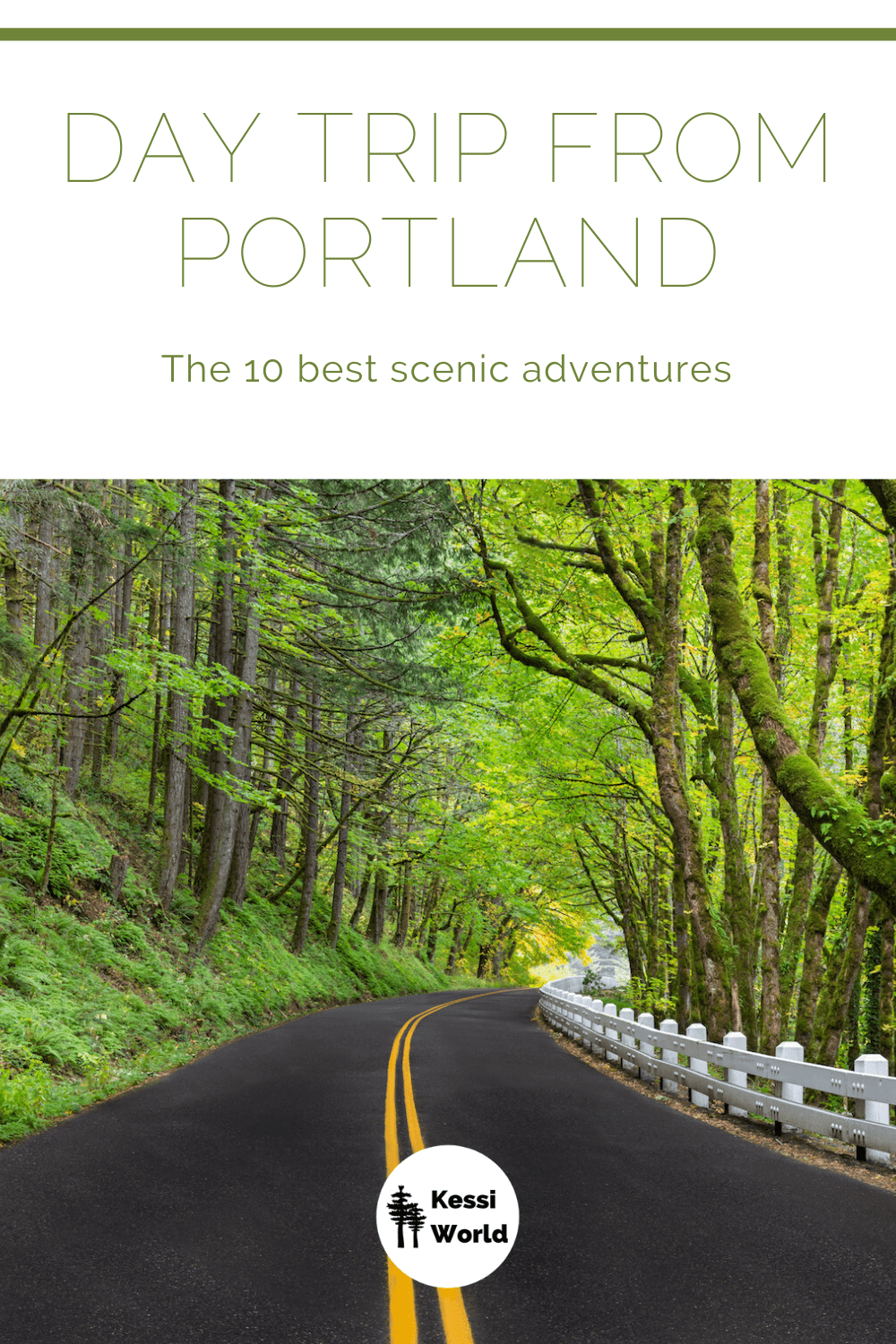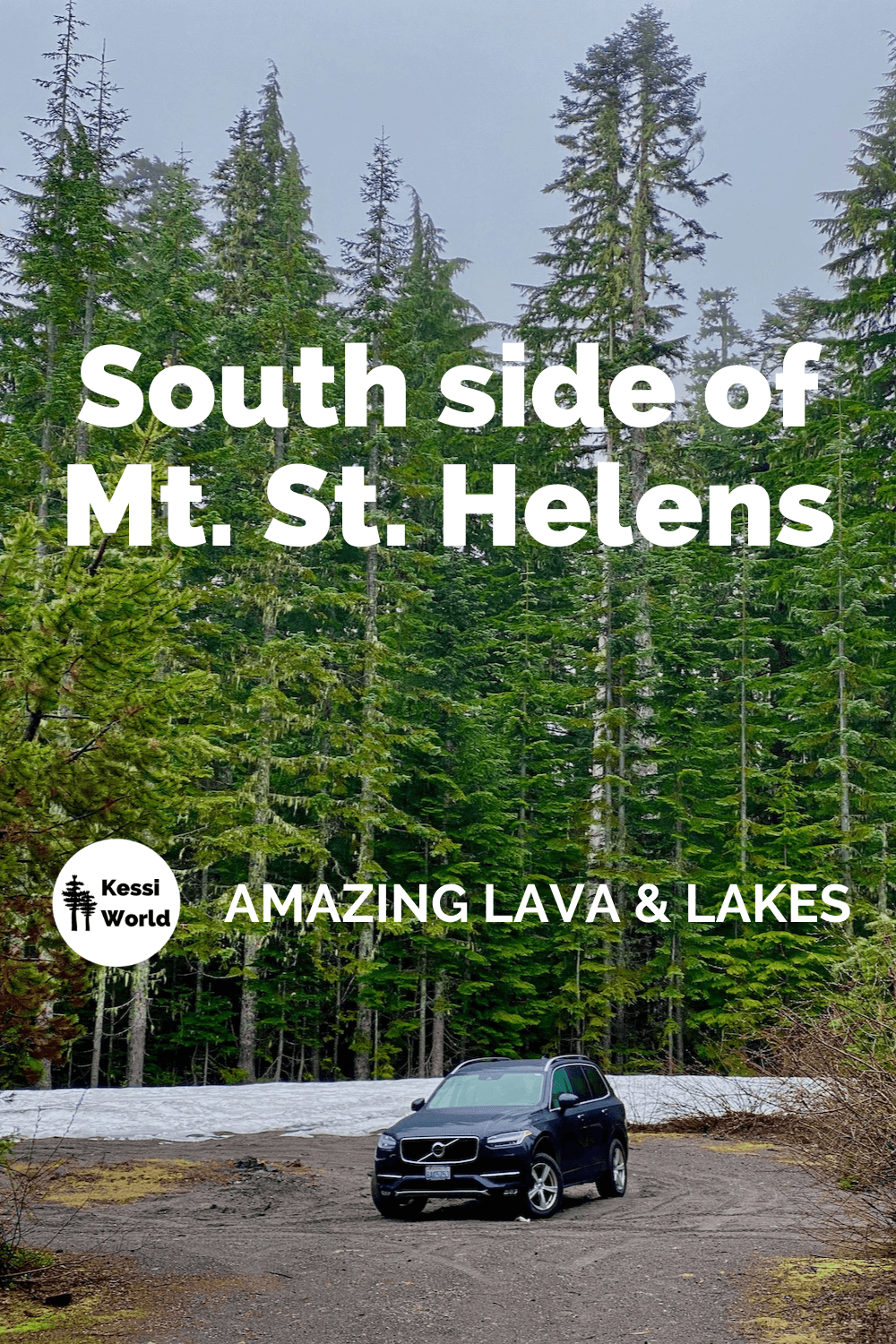
A day trip from Portland to visit Mount St. Helens is a right of passage for any Pacific Northwest local or visitors to the area. The south side of the National Volcanic Monument is easy to reach and the open road inspires freedom and fresh air. Take a break from the stresses of daily life and break away to pine needles, lava tubes, pristine lakes and alpine hikes.
Mount St. Helens seems like a forever volcano, acting up every few hundreds years for several millennia now. She’s dormant at the moment, but you just never know. Of course, the most dramatic tantrum in modern history took place throughout 1980. I grew up only 40 miles away from the crater and write about my experience, Where were you when the volcano blew?
The famous eruption left a tale of two mountains, with the north facing portion completely obliterated and forever changed — Spirit Lake lifted 200 feet and reshaped and acres of old growth timber blown over like matchsticks. Some hillsides were spared, with little to no damage while other ridges experienced full fury. Today, while the area continues to reshape with more bursts of green, a day-trip drive along the Spirit Lake Highway offers an incredible view into the power of Mother Nature.
While the entire mountain felt the force of the blast, and ash clouded everything, the southern slope of Mount St. Helens, around Cougar, Washington, largely escaped in one piece. Thousand year old lava flows and pristine mountain lakes and reservoirs still provide fantastic hiking and camping opportunities today. Growing up so close to the Volcanic wonderland provided me with numerous opportunities to experience the variations of recreation in this part of the Gifford Pinchot National Forest. From camping along the Lewis River to helicopter rides into the crater of the smoldering volcano, I’ve enjoyed getting to know this powerful mountain.
It is also possible to make a day-long road trip between Portland and Seattle via foresty roads that follow the curves through thick timber hugging the eastern side of the Volcanic Area. You can read more about this option in the article, Spirit Lake road trip — the secret side of Mount St. Helens.
Visit Mount St. Helens — the day trip map for the south side
As the world begins to once again open up, a day trip to the southern region of the Mount St. Helens National Volcanic Monument can help quench the thirst for a getaway that allows a different view on life while still sticking close to home. The map below outlines the driving route from Portland with key stops in blue. The red markers are other areas of interest that, in normal times, would be options — a good resource to keep up to date on open roads and recreation is the Pinchot National Forest website.
Weather on Mount St. Helens and planning
If living anywhere in the Pacific Northwest, you know that the weather can always be wet west of the Cascade Mountains any time of year. From Cougar onward up the mountain expect snow October through May. Almost into June, I was recently on a road near the Climbers Bivouac that was still impassible due to snow. It’s best to bring several different layers of clothing to match the micro-climates and time of year. While hiking in the forest offers cover from the hot summer sun, be mindful of the rays and be sure to wear sunscreen and take plenty of water if planning longer hikes.

It might also be a good idea to have a cooler bag along to store snacks and drinks for picnic areas, in addition to water, cups and extra hand sanitizer. Restaurant options are limited and mostly only take-out as well — best to use Woodland as the key provisions stop.
While there isn’t a fee to enter the National Volcanic Monument, plan to have some petty cash available, preferably in $5 increments, to pay parking fees in some of the other areas, especially when traveling on Friday, Saturday and Sunday.
Once leaving Woodland, WA (the exit on Interstate 5) expect that cell service will be spotty at best the rest of the day — even in Cougar. T-Mobile seems to have the worst reception while Verizon is known for better overall reception in forests and rural areas of the Pacific Northwest. As such, I suggest downloading this forest service map to your phone to have just in case.
Getting started — early to rise
Starting early not only helps with traffic in the reverse commute from Portland, but helps beat the crowds if hiking is on the agenda as well as allowing more time to enjoy all the offerings of the area.
Once on Interstate 5 use Exit #21 to land in Woodland, WA. This is great place to gas up, grab some food and prepare for a quieter approach to nature for the remainder of the day.

Cougar — the hub to a visit to Mount St. Helens south side
The road gets rural very quickly and soon enough thick forests surround the highway 503. A few pastures and lake views arrive towards the south as logging trucks chug by with squealing air brakes. Soon enough you’ll come upon the mountain burgh of Cougar. I’ve stayed at the Lone Pine Inn, which is about the only lodging available in the area other than campgrounds. They have a basic restaurant that is open for to-go items, while a convenience store across the road serves up everything expected for a gas and go. This is really the last option to spend money on Pringles and Diet Coke — the breakfast of champions! There’s much better scenery up the road, so unless there’s a need for provisions just keep on trucking.
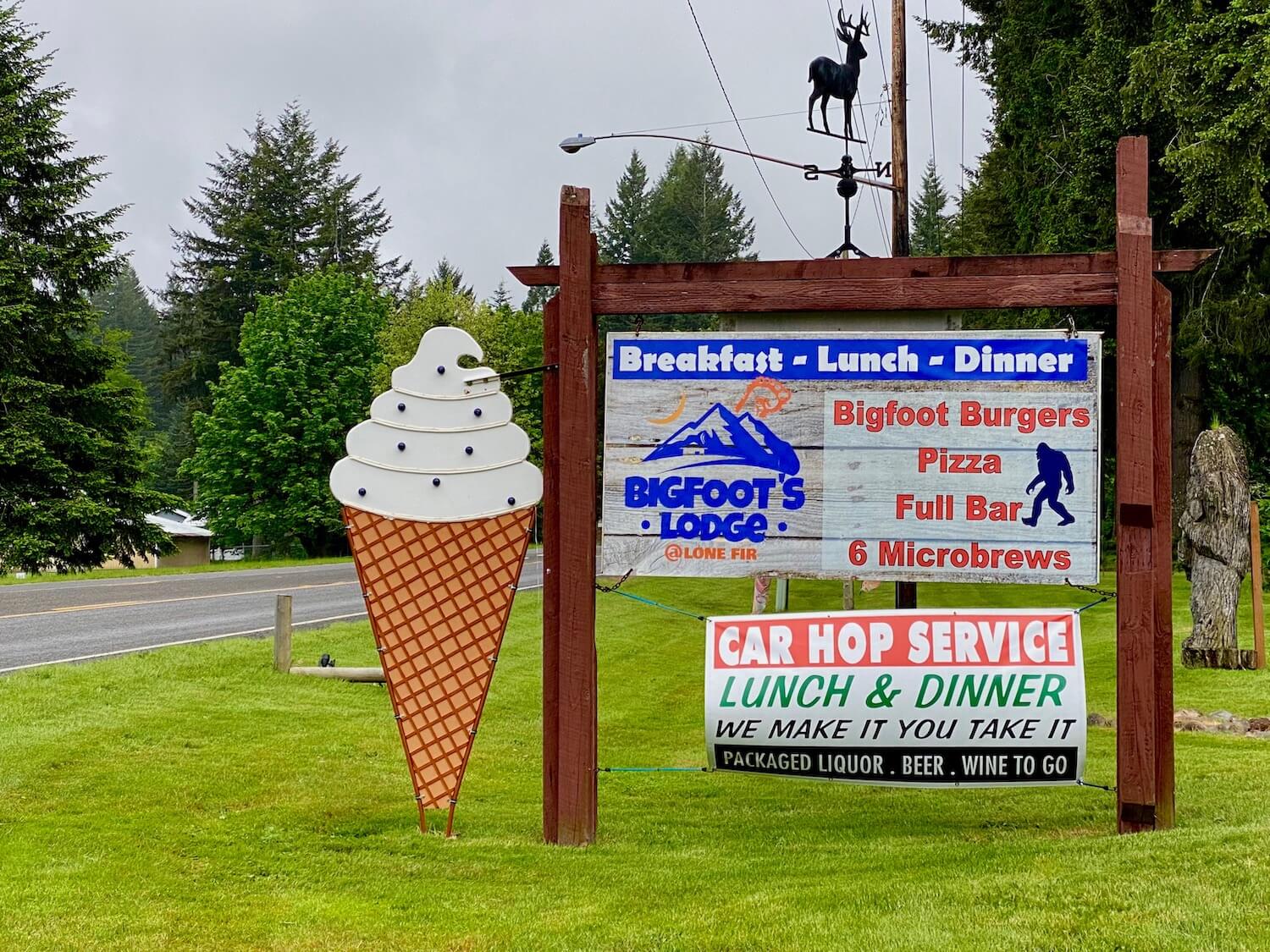
Trail of two forests Interpretive Trail
I love interpretive trails and this one doesn’t disappoint. It is currently open and a $5 payment is required to park in the lot. There are open outhouse style restrooms and the trail is very well maintained. It’s a simple half mile loop that winds through a relatively “new” forest that’s grown over the most recent lava flow, about 200 years ago. There were many lava vents on the south side of the volcano, which spilled the magma into the forest, burning the trees and creating outlines of the forest made out of pumice turned to stone. Enjoy the boardwalk with periodic placards explaining the history and be sure to experience the claustrophobic crawl through an actual tree turned petrified tunnel.
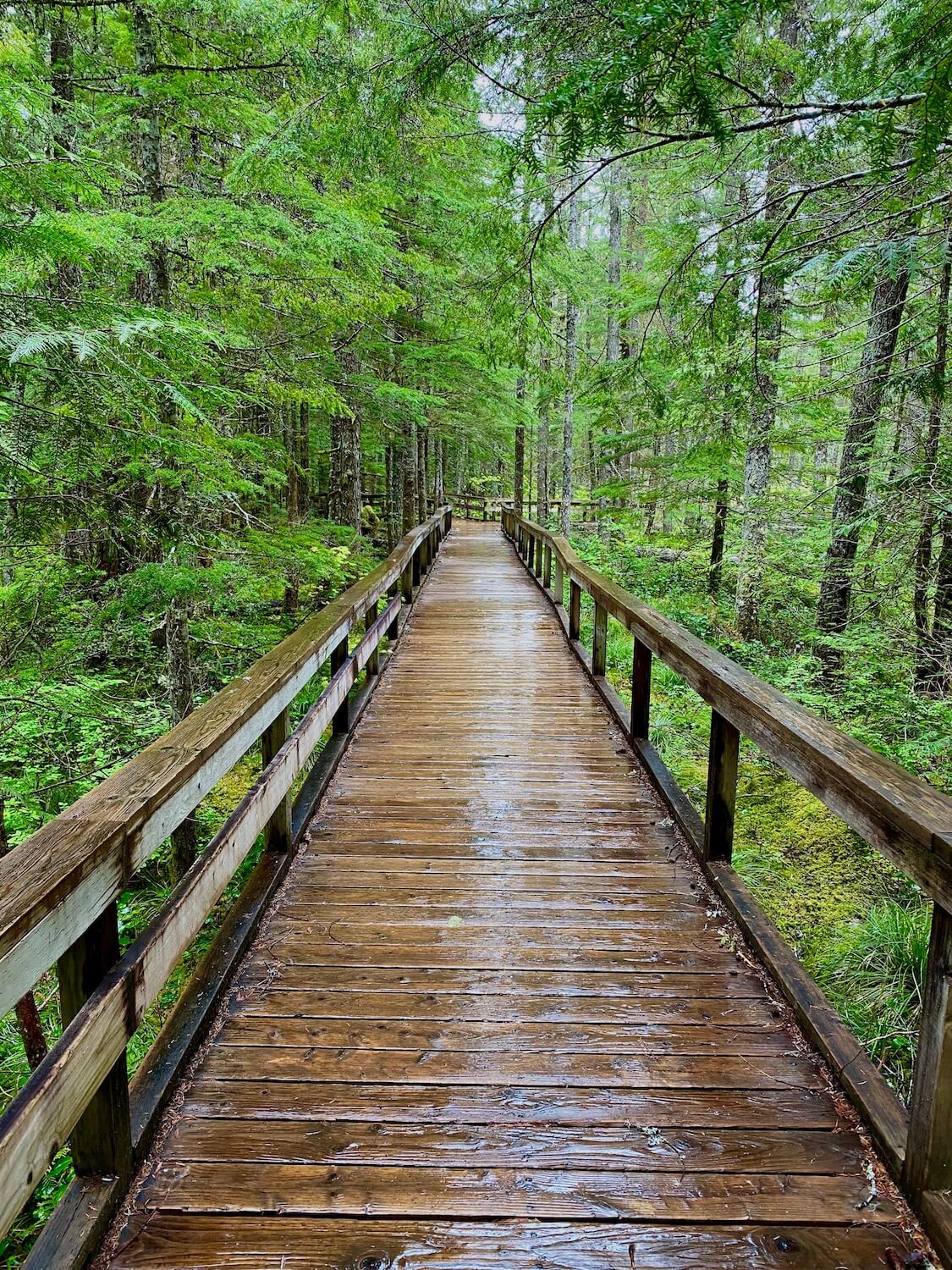
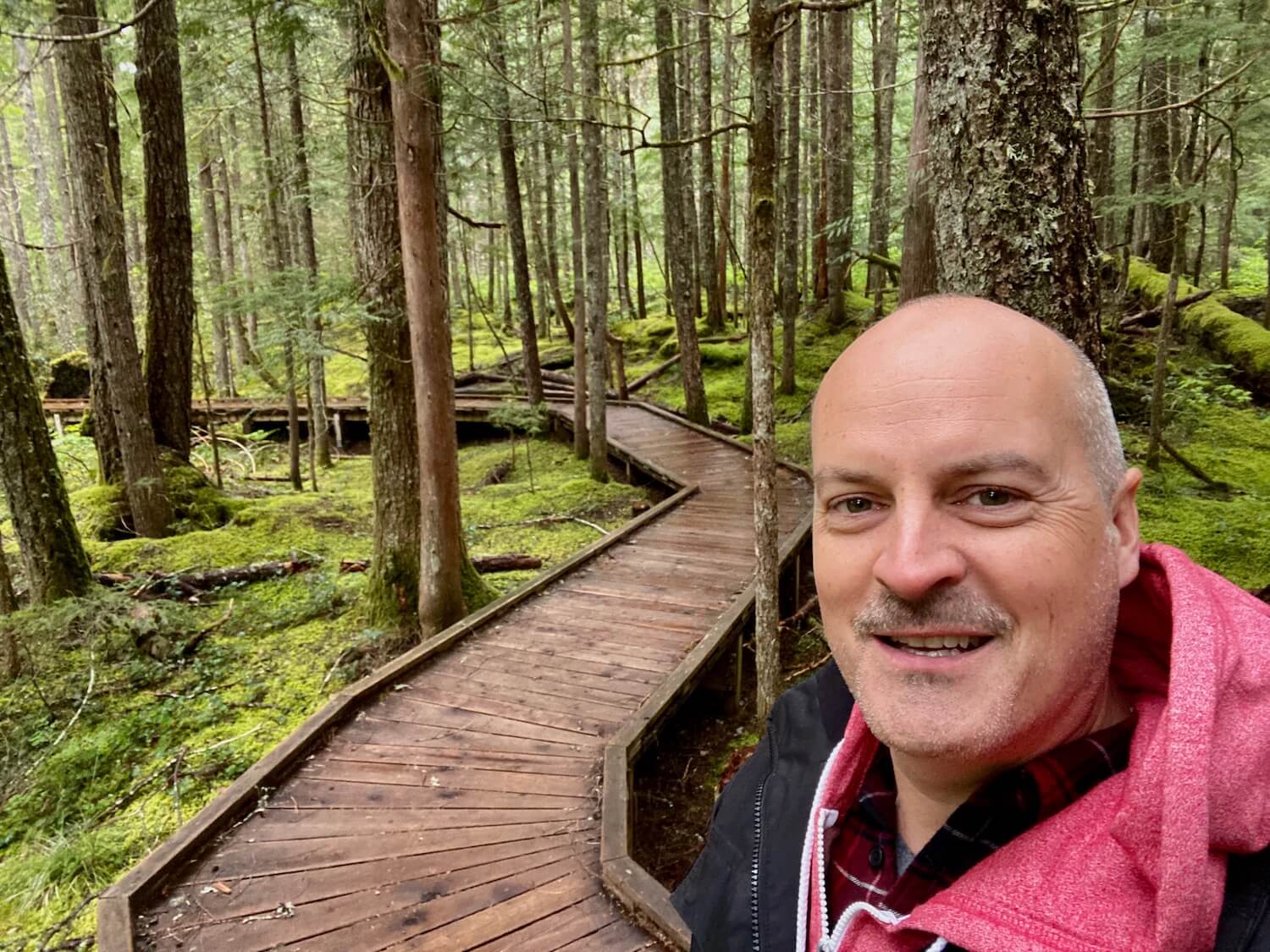
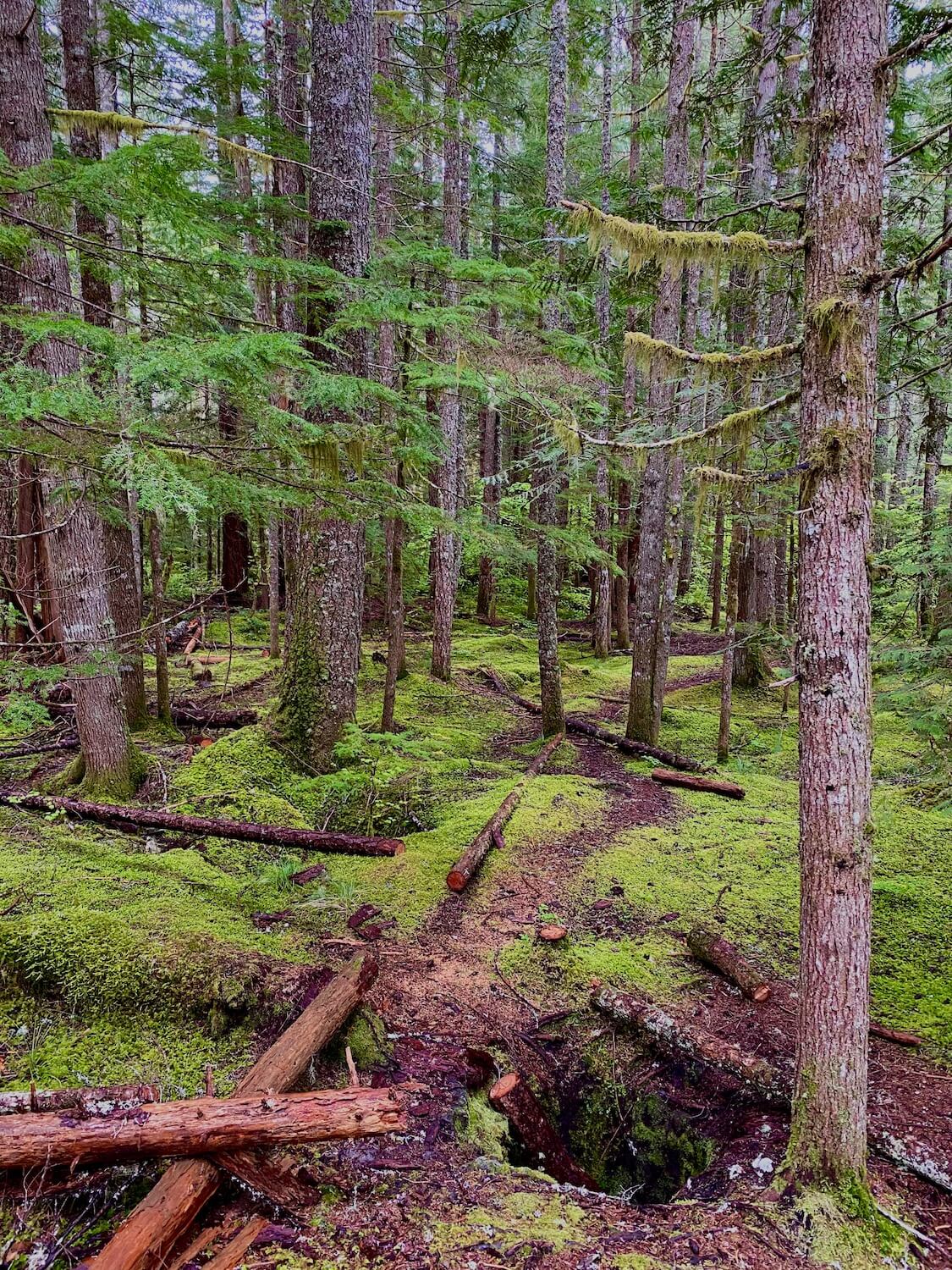
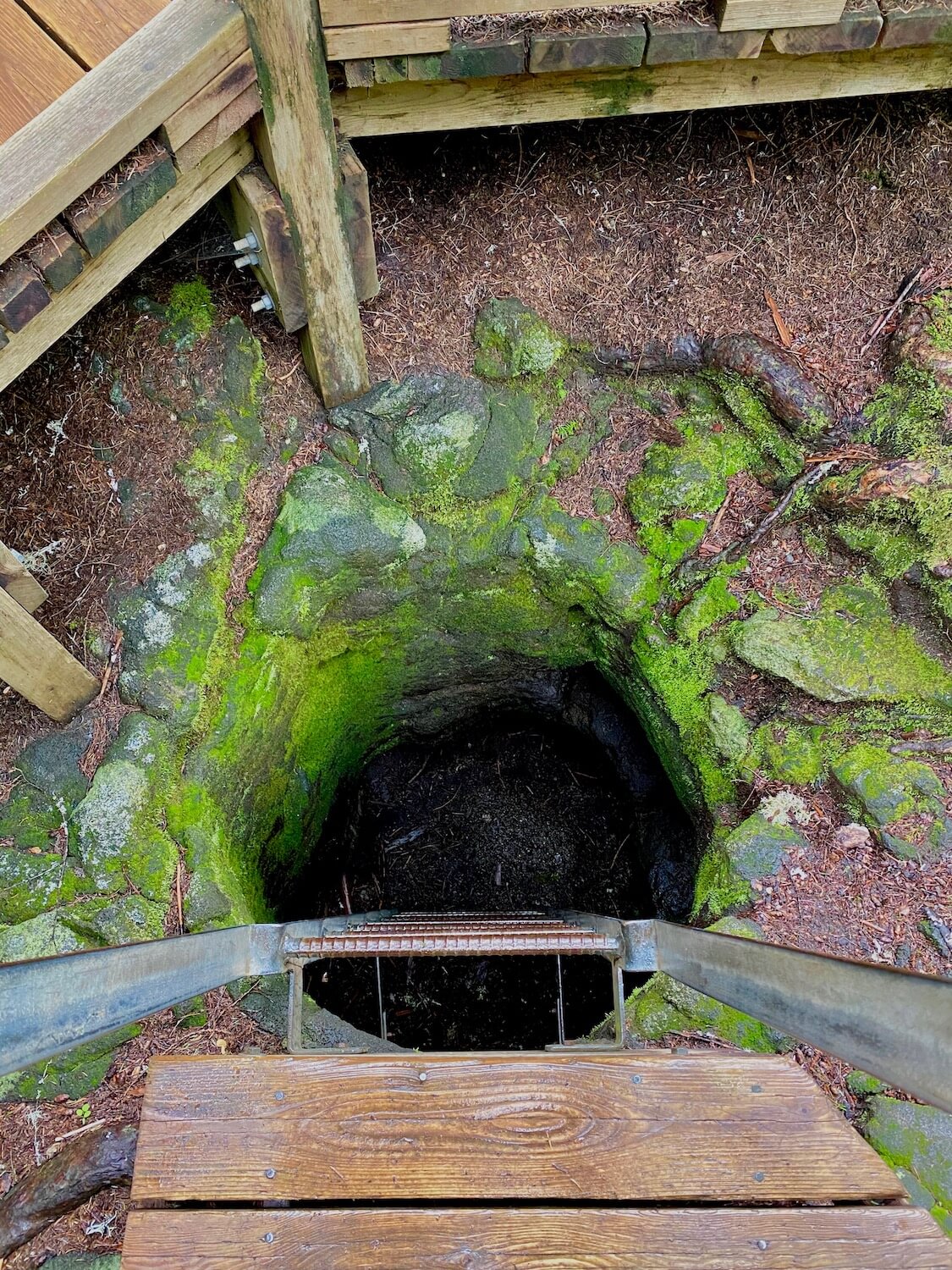
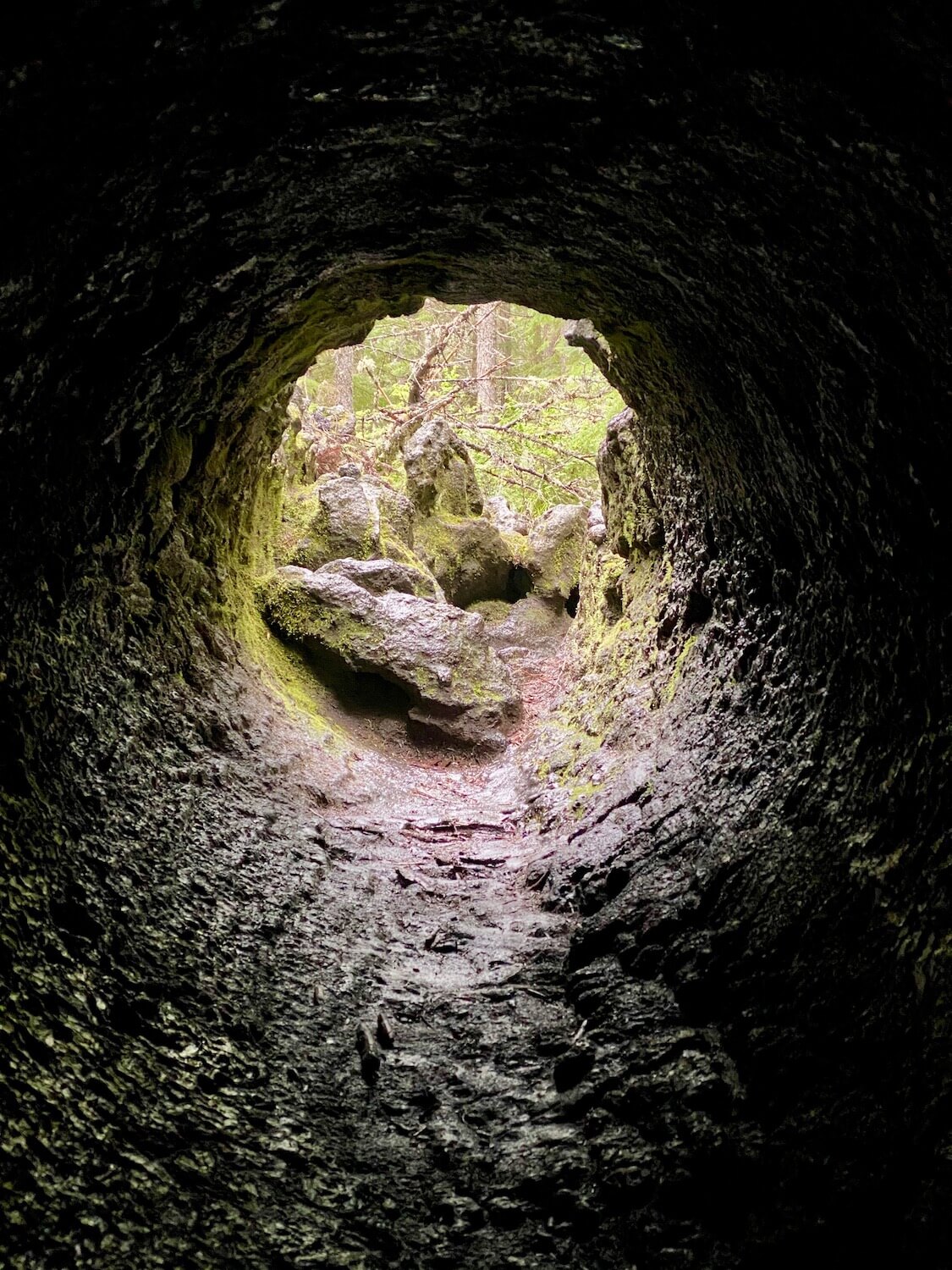
Ape Caves, Lower Lewis Falls and Climbers Bivouac
In normal times, these activities would be highest on the list of engaging and adventurous activities on this side of the volcano. As of the publishing of this piece (6/3/20), the Ape Caves themselves are closed due to issues protecting the bats — although some of the above-ground trails may be available for hiking. Lower Lewis Falls remains closed all summer due to crowd control around the corona virus. The Pinchot National Forest is a great resource for updates on the expansion of openings in the area.
Climbers Biouvac is open but subject to permits which usually sell out months in advance. Check the Gifford Pinchot National Forest site for more information on climbing Mount St. Helens. The trip is easily accomplished in one day and relatively straight forward — not requiring a lot of technical activity. I reached the crater rim with a few friends back in June, 2013, and it was a really fun day.

Lewis Lake Country
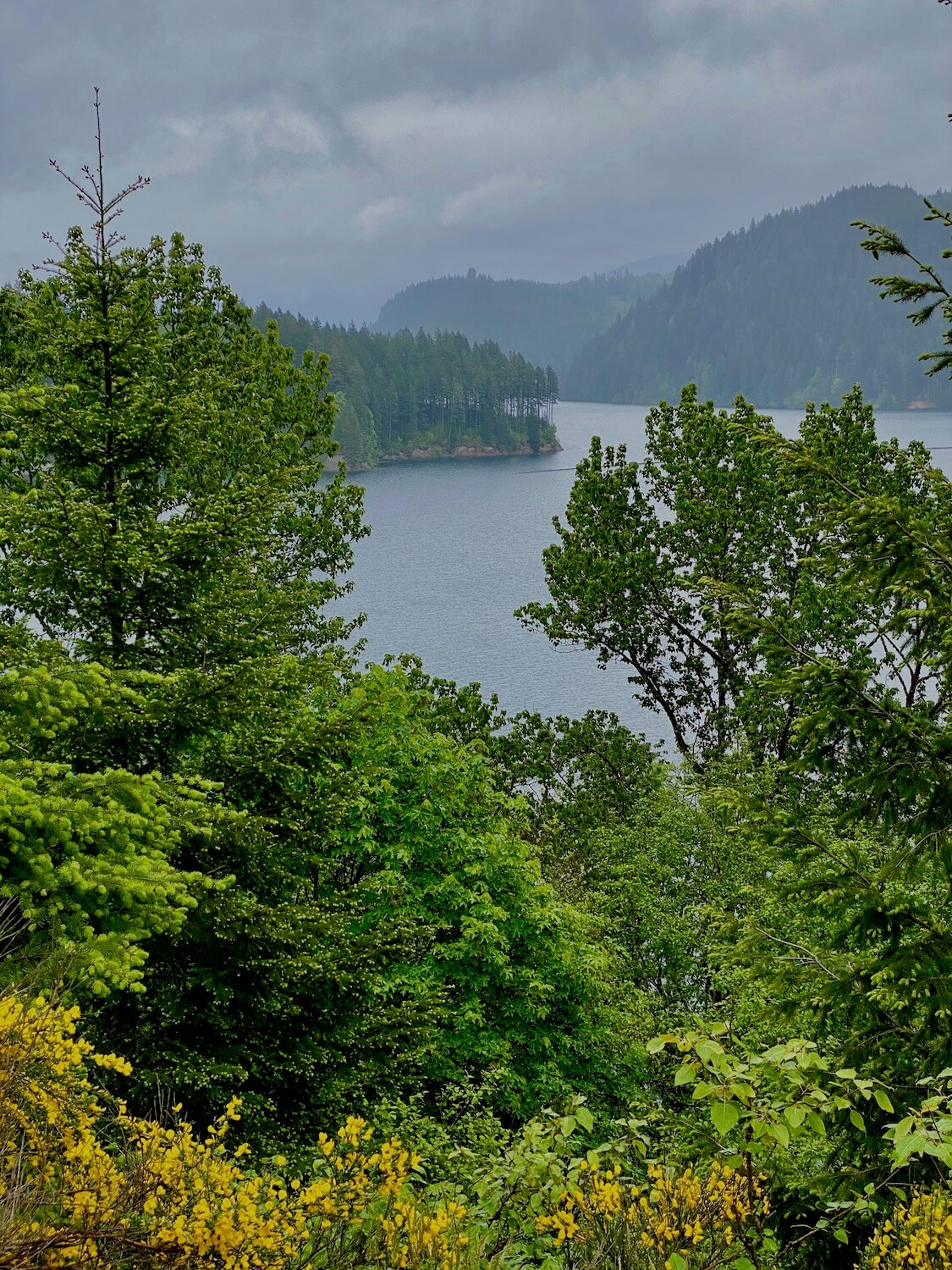
The Lewis River begins in the center of the Gifford-Pinchot National Forest and flows to the Columbia River near Woodland, Washington. Three dams on the river create the expansive Lake Merwin, Yale and Swift Reservoirs. This rich system is managed by PacifiCorp, an energy company, and provides a variety of water side parks offering access to boating, camping, picnicking and swimming in pristine mountain runoff. Most of these areas are open today for day use, boating and fishing. On the busier days of the week there are $5 fees to park in the lot.

Return home refreshed
Pro Tip: Stop at Burgerville USA, a favorite of mine growing up, for grub on the drive back. They’re known for local specialities like Walla Walla onion rings and Oregon strawberry milkshakes and shortcake in season. They also have a veggie/vegan black bean burger that is tasty. There are locations in Centralia, Kelso and Vancouver, Washington — the most convenient for this itinerary is right off the Woodland exit of Interstate 5.
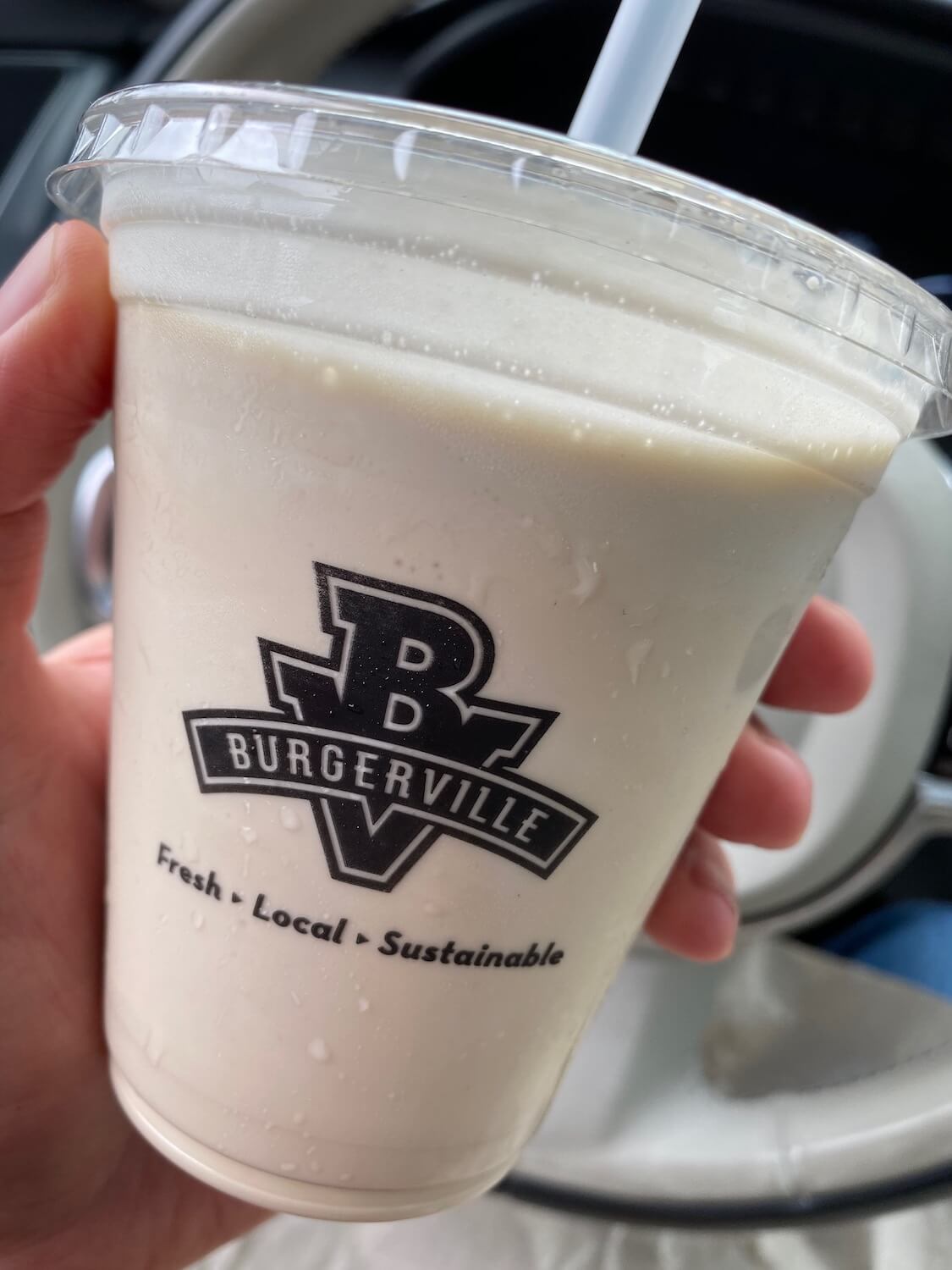
A drive through the forest always refreshes my spirits and a visit to Mount St. Helens offers an especially inspiring day of renewed life through the abundance of green, dense forest and open lake vistas. Stop along the way and take in the fresh mountain air.
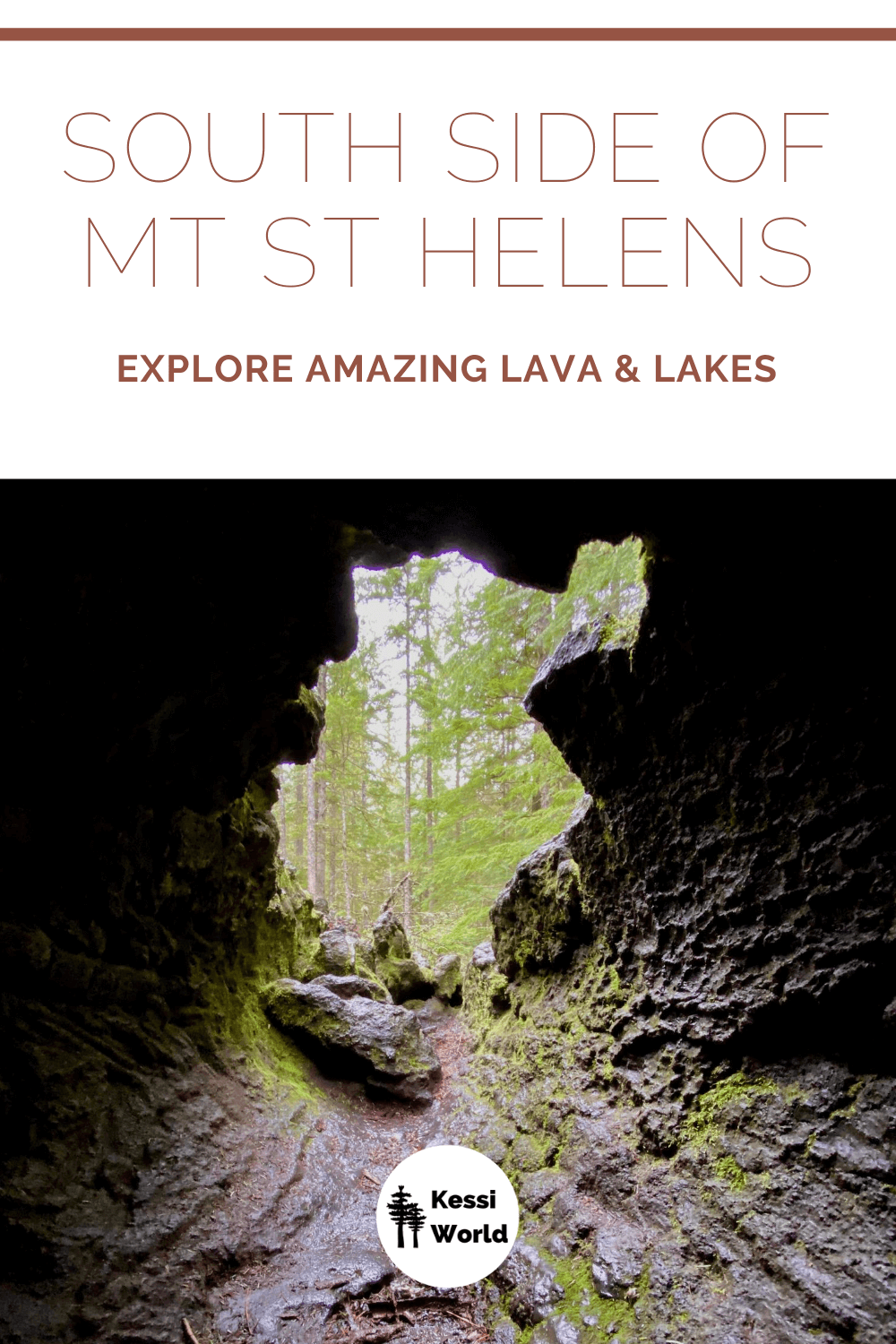
For more ideas on day trips from Portland, click the photo below or HERE.
